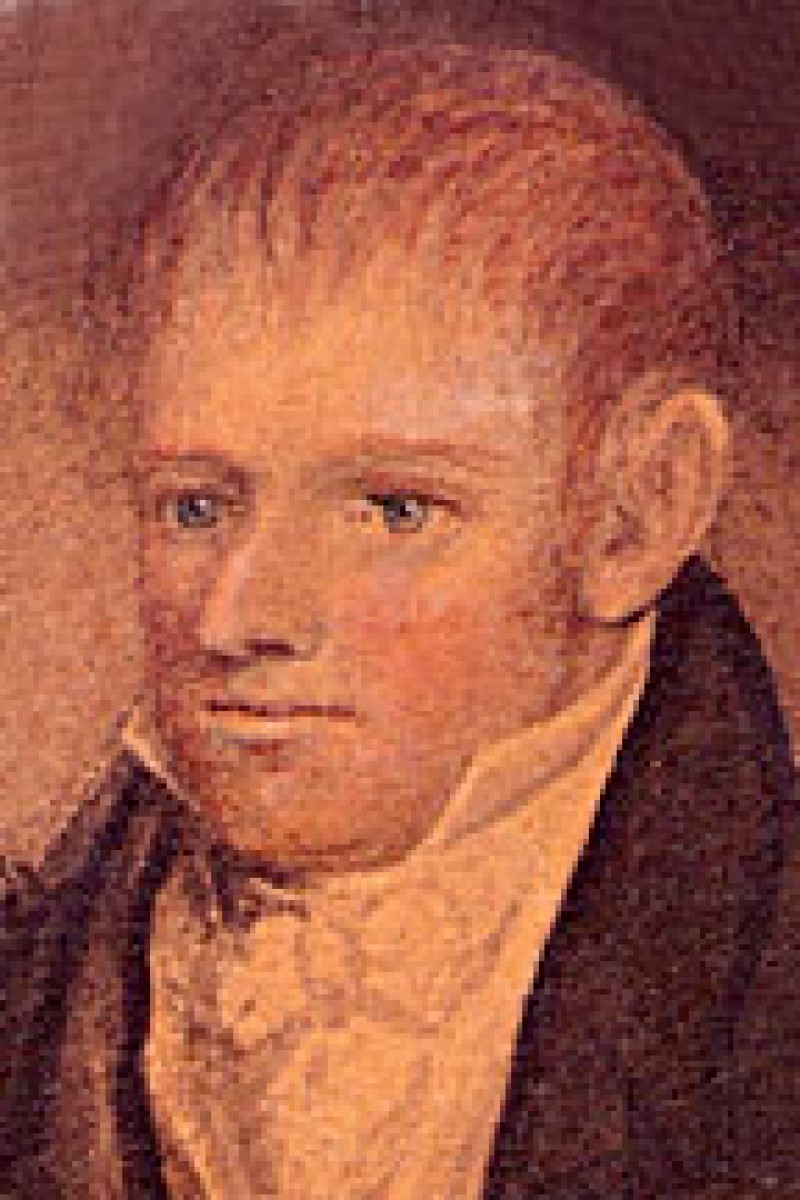Charles Robert Sherman
Charles Robert Sherman served on the Supreme Court of Ohio in the 1820s, but perhaps his biggest link to history is the fact that he was the father of Civil War General William Tecumseh Sherman.
Born on Sept. 26, 1788, in Norwalk, Conn., Charles was the oldest son of Taylor and Elizabeth Stoddard Sherman. His father was a lawyer and also a judge. Studying law with his father and Judge Chapman, Sherman was admitted to the bar in Connecticut in 1810.
Sherman first arrived in Ohio to review a tract of land his father purchased in Sherman Township in Huron County. Arriving in the summer of 1810, Sherman learned it would not be safe to visit his father’s land, as Shawnee Chief Tecumseh was organizing tribes to fight against white settlers. Sherman instead went to Lancaster, where he discovered a need for a young attorney and settled there. After retrieving his family from Connecticut, Sherman established his legal practice. The War of 1812 intervened, however, and Sherman served as a major in the Third Division of the Second Brigade of the Ohio Militia.
On Nov. 9, 1813, President James Madison appointed Sherman Collector of Internal Revenue for the Third District of Ohio, collecting taxes on alcohol, salt, sugar, carriages, sales at auction, bank notes, all notes discounted by a bank, inland bills of exchange, as well as a stamp duty of 1 percent. Sherman employed deputies in Fairfield, Pickaway, Madison, Franklin, Delaware and Knox counties to collect the taxes. Much of the tax revenue collected was script issued by local banks.
In July 1817, the federal government required all tax payments be made with notes of the Bank of the United States or its branches. No branch of this bank existed in Sherman’s district. The local banking system failed, and Sherman’s deputies were left with a large amount of money that was virtually worthless and they had great difficulty converting local bank notes into currency the Internal Revenue Bureau would accept. Although many tax collectors appealed to Congress for relief of their debt, Sherman refused to take this course of action; he took the proceeds of all his property and a substantial portion of his annual earnings to pay this debt.
Sherman was appointed by the Ohio General Assembly to the Supreme Court on Jan. 11, 1823, to replace John McLean. He received his commission from Gov. Jeremiah Morrow on Jan. 25, 1823 and his seven-year term began on Jan. 28, 1823. Sherman’s opinions are in volumes 1 to 3 of Ohio Reports. At this time, Supreme Court Justices traveled throughout their districts holding Court. Sherman was holding Court in Lebanon when he became ill and died on June 24, 1829. Sherman was buried in Lebanon, but many years later, his body was reinterred in Elmwood Cemetery in Lancaster.
The Sherman family was members of the Presbyterian Church in Lancaster. All 11 children were baptized by the pastor, the Rev. John Wright. Sherman served as a trustee of Ohio University, where his son, Charles Taylor Sherman, attended. Besides supporting higher education, he promoted and started a private elementary school in 1820 in Lancaster.
On May 8, 1810, Sherman married Mary Hoyt (1787 - 1852) of Norwalk, Conn. They had 11 children: Charles Taylor, Mary Elizabeth, James, Amelia, Julia Ann, William Tecumseh, Lampson Parker, John, Susan Denman, Hoyt and Frances Beecher, who was born one month before her father’s death. Sherman’s son, Civil War General William Tecumseh Sherman, recalled how excited the children were when their father came home. He wrote, “I can remember well his coming home as usual on horseback, when all the boys would run to meet him. Whoever got to him first had the privilege to ride his horse ‘Dick’ back to the stable on the rear of the lot.”
William Tecumseh Sherman wrote of his father’s death:
“Of course father’s death was a terrible event in a family of eleven children. I was too young to appreciate it, but it was manifest that had it not been for the large circle of warm friends to help mother we would have been poor indeed. Mother had absolutely nothing but the house, two or three town lots and some little bank stock but I have reason to believe that Mr. (Thomas) Ewing, Mr. (Henry) Stanbery (present Attorney General), Mr. (Philoman) Beecher and others arranged her affairs so that she had a small income besides the house. Still so large a family was more than she could have cared for without the positive help of friends. Mr (William J.) Reese took Julia. Lamp was taken by Mr. Charles Hammond of Cincinnati. John by Cousin John Sherman of Mount Vernon, and the younger children remained with mother at Lancaster. I was taken by Mr. Ewing and put on a par with his own children.”
In 1844, Mary Sherman moved from Lancaster to Mansfield with John, Susan and Frances. She lived there until her death on Sept. 23, 1852. She was buried in Elmwood Cemetery in Lancaster.

15th Justice of the Supreme Court of Ohio
